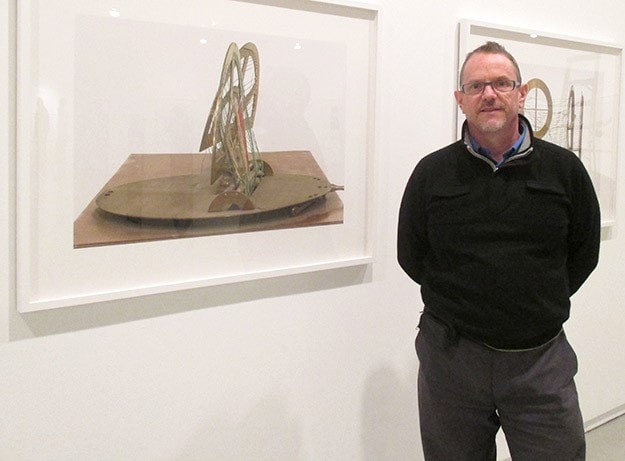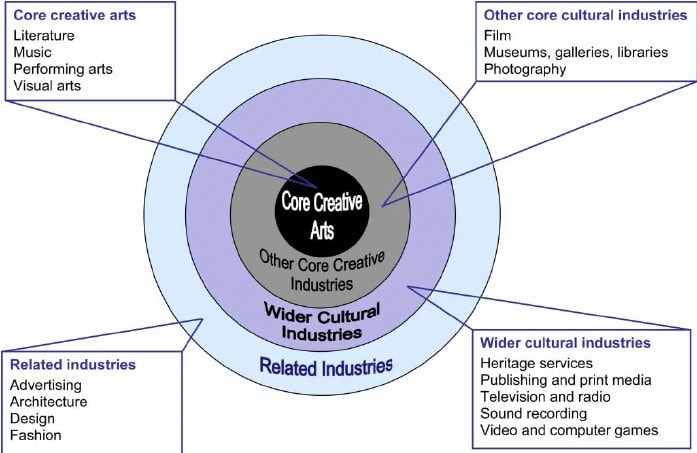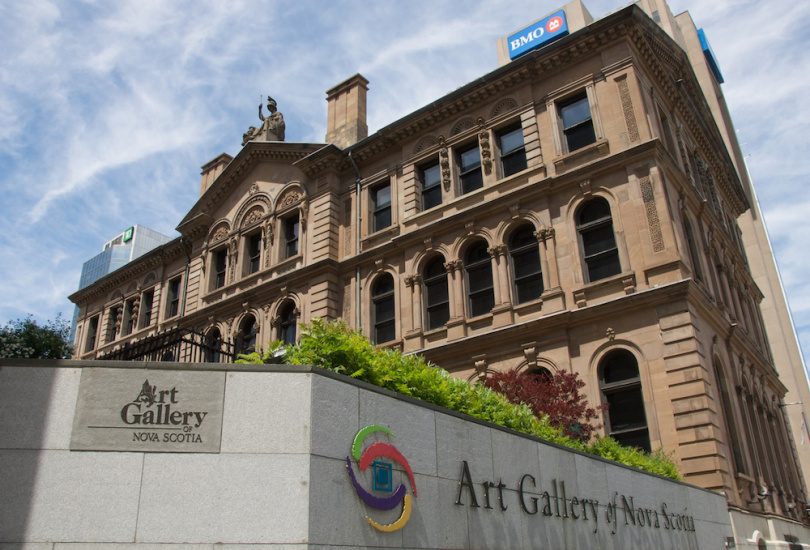KJIPUKTUK (Halifax) – In early May we published a little op-ed, Delaying a new Art Gallery building in Halifax doesn’t make cents, wherein we argued that the provincial money recently committed to the building of a new Art Gallery of Nova Scotia (AGNS) is money well spent.
This was in response to a petition signed by many thousands of Nova Scotians who want that money to be allocated to healthcare. Healthcare is in crisis, they say, and spending money on something as unnecessary and luxurious as art at this time is a very bad idea.
Well, that little op-ed caused some lively debate and raised questions I don’t have the expertise to answer.
To further explore why art matters from a societal point of view, and indeed functions as a major economic engine all on its own, I met with Robin Metcalfe, who has thought deeply about these matters.
Metcalfe, a LGBTQIA activist and archivist, and a published writer, poet and art critic, is the director of the St. Mary’s University Art Gallery in Halifax.

What is the economic impact of the cultural sector on Canada and Nova Scotia?
People often don’t appreciate how large the cultural sector actually is, and what major economic impact it has on Canada and Nova Scotia.
Ten years ago, in a study that I was involved in, the Conference Board of Canada estimated that the cultural sector accounted for 1.1 million jobs in 2007 in Canada. The arts sector employs as many people as agriculture, forestry, fishing, mining, oil and gas, and utility sectors combined.
We’ve exhausted most of our options in terms of manufacturing and resource extraction in Nova Scotia. For the last 50 years governments have been throwing money at resource and manufacturing Industries, which typically stay long enough to gobble up the money that’s given to them and then close down and move away.
Halifax and Nova Scotia have really high quality of life that is very attractive to people in the cultural sector and we could be a major player in culture, even more so than we are now if we understood that to be part of our general social and economic strategy.
How composing music, writing literature and creating visual art contributes to the economy
It’s also important to note that while I’m arguing the culture has a strong economic impact, it’s wrong to apply strictly economic criteria to core creative production.
When I was involved with the Nova Scotia Cultural Action Network, we looked at different models. We found a very interesting model which is developed by a researcher called David Throsby, who’s Australian.
If you imagine a set of four concentric circles Throsby puts core creative production in the very center of that. That core creative production then generates other kinds of activity that radiate out through areas like design, advertising and cultural industries.

Core creative production includes original composition in music and original writing and literature original creation in the visual arts. These are activities that shouldn’t be expected to earn money. Rather, they are there to generate value that then is employed in other parts of the economy.
The next circle contains cultural Industries, which includes things like music publishing, literary publishing, filmmaking and video games, for example, all of which are areas where we have considerable potential.
I think the decimation of the film industry by the cutting of the of the tax benefits a few years ago with a good example of cutting off our nose to spite our face in Nova Scotia. The film industry generated a huge amount of other activity in other areas. It was also supported by the presence here a large number of visual artists, for example, many of whom have worked on things like set design. They were done here and video games, a perfect example of an area where people with visual arts skills are really in demand.
What we need to be doing in our school system is encouraging creative thinking and major leaders in in the digital economy have said that what they want, what they’re looking for, is people who come out of art college. They’re the kind of people have exactly the right mindset to be able to thrive and to provide really strong value in digital Industries.
The last concentric circle contains the rest of the economy, manufacturing and service sectors for example. All those sectors use design, they use advertising, these various communications tools all of which benefit from what’s generated at the core, which is creative.
What is the role of the AGNS within Nova Scotia’s cultural sector?
The AGNS is an important piece of the infrastructure that enables core creation, because it gives the opportunity for visual artists in Nova Scotia to exhibit their work, and for the public in Nova Scotia to become better aware of what’s happening in visual arts here and elsewhere.

It is very important that an institution like the AGNS also bring in artists from other parts of Canada other parts of the world so that we are part of an international conversation. Our artists get to see good international art first hand. It also sets up relationships of reciprocity, whereas if we if we want our artists to show in the United States, in Australia, in China, we better show French and American and Australian and Chinese artists here, as well as our own local artists.
Many people don’t feel much of a connection with the arts. Why is that?
In North America we live in a culture that has inherited a deep bias against art. If it’s taught at all It’s not taught well in our schools, and the historical circumstances under which settlers arrived in North America are such that our culture still associates the arts with privilege, even though these days visual arts, for example, are significant means of expression by, for example, indigenous artists and artists who come from disadvantaged backgrounds.
Art and cultural activities in general are particularly important in Nova Scotia, because Nova Scotia has significant assets and potential. We have an arts college here, and we have a really large and active cultural community.
However, that community is not well supported. Provincially it’s supported on a very modest level. In the past the city did not support the arts at all, except for a few key institutions, but lately the city has begun to step up. Of course, we have access to federal funding through the Canada Council for the Arts. But if you’re not getting significant funding from the provincial and municipal levels than it’s hard to get more money from Canada Council.
The healthcare versus art debate is misguided, we need both
I’ve used the metaphor of a garden, I can also use the metaphor of the body. The economy and the society are living organisms. When things work well the value that’s represented by money is constantly being regenerated by the the organic processes of our society. But if our society is missing key pieces, then it’s not going to be generating that value.
Culture is critical in many levels to the healthy maintenance of that body. You don’t say, well, I can’t afford a kidney because I have to invest in my heart. You need a heart and a kidney. To think that we can starve culture in order to feed health care for example, is very problematic. We’ve been starving culture for the last hundred years here. It’s been radically under supported in relation to other developed countries. If we compare ourselves to to Denmark or France or Germany or England or most other developed countries, even China these days. I think we’ll find that that we’re not doing as well as we think we are.
I’ve mentioned how core creation generates economic activity, it’s also important in terms of health. There’s been countless studies that show that access to culture and cultural expression, whether it’s as consumers or producers, is critical for mental health and general physical health. It’s up there with access to nature, which is also being discovered more and more as being critical to our overall well-being.
We can’t talk about the well-being of Nova Scotians without talking about the role of culture in that.
Finally I’d say that if we think we don’t have the money we have to look at why that is. One reason is because we’re not a healthy body politic because our leaders don’t understand the integrated and coherent ways in which the different aspects of our society work together. to reinforce each other and support each other.
The other thing we need to consider is that we are living in a society that’s radically unequal in terms of the distribution of income. The rich are getting fabulously rich, to the point one percent owns a scandalously large amount of the economy, while the rest of the society is getting poorer. It’s showing up as the withering of the middle class.
Governments are always saying we can’t afford this we can’t afford that, what they really mean is they don’t want to tax their friends and they don’t want to tax the corporations. So the money is there. We are the wealthiest society that has ever existed in human history. We can afford healthcare and we can afford culture.
I would say it’s art for humanity’s sake. Art is probably the highest expression of what it is to be human, and we have to ask ourselves. for what we want to be healthy and live long if we don’t have a healthy culture.
Austerity never saved anybody. The Europeans made that mistake by imposing austerity and it destroys economies and destroys cultures destroy societies. The money is there. It’s just in the wrong place.
Why all this is especially relevant for a poor and predominantly rural province such as Nova Scotia
I wanted to make a couple of other points about Nova Scotia in particular. One is that we’re a very rural province. The Maritimes and the Atlantic provinces in general are far more rural than most of North America. We don’t have really large cities. We also are much older than most of North America, we have an ageing population.
And so we can see our communities withering. I have a home in Sheet Harbor Passage. The emergency room is closed several days every week because of the lack of medical staff.
Now part of the reason is the lack of money, but it’s not just the lack of money. It’s also because we don’t support culture and the rural life of Nova Scotia. We shut down our post offices, we shut down various services. Some of these are federal decisions, some are municipal, some are provincial, but these decisions are made one by one on a purely economic basis without looking at what their larger consequences are.
If we had a coherent program for sustaining life in rural communities, we would invest in various types of infrastructure including public transportation, broadband internet. For another key example, we would invest in culture in those areas. We would invest in the AGNS, so that artists who are able to live and work on the Eastern Shore have a place to exhibit their work.
If we keep just spending money to pay for healthcare and for an ageing population in withering rural communities without doing the other work, we will just run out of money. We have to think about what kind of society we need to generate the wealth so that we can afford to live in rural communities, so that we can afford to grow old here.
More than anything else Nova Scotia should be moving towards an environmentally sustainable cultural-based economy. If we are investing in culture, in education, in health and in environmental sustainability we would generate enormous economic benefits. Without investing in those things we will continue to decline.
Why was there so little push back from the arts community when people started complaining about provincial support for a new AGNS?
I think that the cultural community has not been good at developing a united voice. One of the reasons for that is in the cultural community people are very much organized around their particular disciplines. Musicians are part of the music community, filmmakers are part of the film community, and we certainly have interactions between those communities, but we tend to organize around our media and not around the cultural community overall.
That’s why I was part of the Nova Scotia Cultural Action Network. Our effort there was to give a voice to the cultural community in terms of what’s intelligent policy overall. So I think we need more organizing along those lines, so that culture has a stronger voice, a voice that reflects its actual importance socially culturally and economically.
It’s important to put these points of view forward. Often it’s a matter of people not being exposed to alternative ways of thinking. A good example of shifting the discourse is what’s happening around Extinction Rebellion, and the action of younger people around climate change. It’s been safe for a long time to deny climate change, or to not really deal with it seriously. But these days there is a significant part of the population saying we are going to die, our culture is going to die, our species is going to die, our planet is going to die if we don’t act now.
I think that we’re at a point where our society has to ask itself fundamentally, what do we want to be if we’re going to continue to exist? We have to think seriously on every level about what we’re going to be as a society.
People are often surprised by the fact that attendance at museums is constantly rising. Sports, which are heavily promoted by the media, are actually not doing well in terms of audience. Millennials are reading more books than their parents.
Nova Scotia has everything except leadership. If we had visionary leadership, we could take off like a rocket in this province.
With a special thanks to our generous donors who make publication of the Nova Scotia Advocate possible.
Subscribe to the Nova Scotia Advocate weekly digest and never miss an article again. It’s free!




Brilliant summation of the situation and the way forward from Robin Metcalfe, our articulate arts advocate. Our lives need beauty, from art, music, the forests, the oceans. This shouldn’t be secondary to making a profit, since we all lose without beauty in our life.
If we didn’t have ‘the Arts’ as an outlet, life would be so ordinary, miserable. My link to the arts is by singing in a choir. I know most people don’t ‘get it’. It is old-fashioned, takes place mostly in a church (in our mostly sectarian society), but brings JOY to some people who come out to PRAY and listen, most Sundays. It is positively JOYFUL for me to offer this up, with about 20 others of the same ilk. I love going to see a concert at the Capitol Theatre here in Moncton NB. There is an art gallery right in the foyer of this iconic building – what an amazing opportunity for local artists to display their works! We breathe, we work, we sleep, we play – we need ART : visual, written, musical. Some people are BORN …to continue to move us 💞🎶☮️
Robin, your Mom hooked rugs, right up until the END. You sang 🎶 at her funeral. Beautiful memories.
Would make sense if our Healthcare in Cape Breton and other rural areas wasnt in the condition we now find it in. This is about Halifax..a new art gallery. The money generated there just doesnt go to the rural areas while Halifax gets richer! Would the government consider putting the gallery in Sydney? I think not! As an artist myself I still can see where the priority needs to be!
Let’s not pit Nova Scotians against one another, Brenda. Artists from CB can make the trip to a gallery in Hfx, and so can audiences for that matter. This is not about cottage industry, this is about actual careers that pay actual, sustaining incomes, not amateurism. Nothing wrong with amateurism of course, except that you can’t make a living at it, by definition. Artists who dedicate themselves to making art of world-class calibre need to spend all day, every day, doing it. You can’t make good (enough) art in your spare time. This is precisely the attitude that holds NS back (and much of Canada and elsewhere too fwiw) from having a thriving cultural sector.
People in CB need to be proud of the NS artists that get shown at AGNS, whether they’re from CB or elsewhere in the province. It might seem condescending, but gallery curators and audiences with arts educations really, actually do know more about art than amateurs, because they have been educated on the subject, and exposed more broadly to the global arts oeuvre. It would be nice if ppl still felt like going to the “big city” (halifax lol) to experience broader culture and grow personally, not just get snippy about how it’s no better than what their neighbour’s kid can do. There’s nothing wrong with acknowledging achievement, even if one can’t come by it themselves due to financial, social or geographic limitations. Myself, I had to leave rural NS for Toronto because every village thinks their golden boy is the best in the world and they don’t need no city slickers to tell them what art is. Boooring. Let’s look a little further afield.
A gallery in a city is a vortex that pulls art (and cultural understanding in general) in and out of NS and unites (or has the potential to unite) audiences adequate to put a little wind beneath the wings of the hopefuls. I love folk art and amateur art and really, all art. But when the only art you experience has only a local scope, you fail to benefit from the full power of art, which can change your life if you’re not too petty to let it. It’s the same reason they open architecture competitions for public buildings etc to international applicants: one of them might have the best idea, and that is what matters most when commissioning art. Because art has inherent value. It’s not just about patting someone on the back for their nice drawing, or simply enriching life “outside of the economy.” It’s part of the economy and a crucial part at that, particularly in this age of social media. It’s one of the only things that can change the dialog on social issues. While it’s important to listen to local voices, they need to be voices participating in a broader conversation.
(For the record, CB should have a serious public art gallery too, maybe smaller to reflect the audience size, but perhaps they could move their collections back & forth from time to time.)
*Please note Brenda I’m not saying you’re an amateur, I’m not referring to you personally, more trying to counter the anti-elitism argument that I have heard sooo many times, especially related to the rural / urban culture debate. I just think ppl get defensive when they aren’t fluent in the language used by experts, and of course experts (esp paid public experts) need to bring the benefits of their expertise to the population they serve. Outreach is absolutely in order, ie a CB campus of AGNS for example, which could present exhibits from the main Hfx collection on a rotating basis. (Maybe this already exists?)
Also, fwiw local art can have a global significance of course (even without meaning to sometimes), by addressing universal themes. But I think in NS, focus on the “local flavour” value has resulted in cultural investment being centred around tourism, instead of around the cultural institutions / art production supports themselves. You can only afford so many flagships and a world-class gallery should be one of them. For example, when I think of world class libraries, the new one in Hfx is the first that comes to mind. And they are likely to be located in the capital cities. So, better in Halifax than Toronto, if you see what I mean.
The impression seems to have been created that anyone who questions the expenditure of 80 million dollars on a new art gallery in Halifax does not recognize the value of investing in the arts. I think many of those raising concerns are wondering why the existing art gallery, housed in two exceptional heritage buildings, could not be expanded or renovated at a much lower cost? Was this possibility ever even considered?